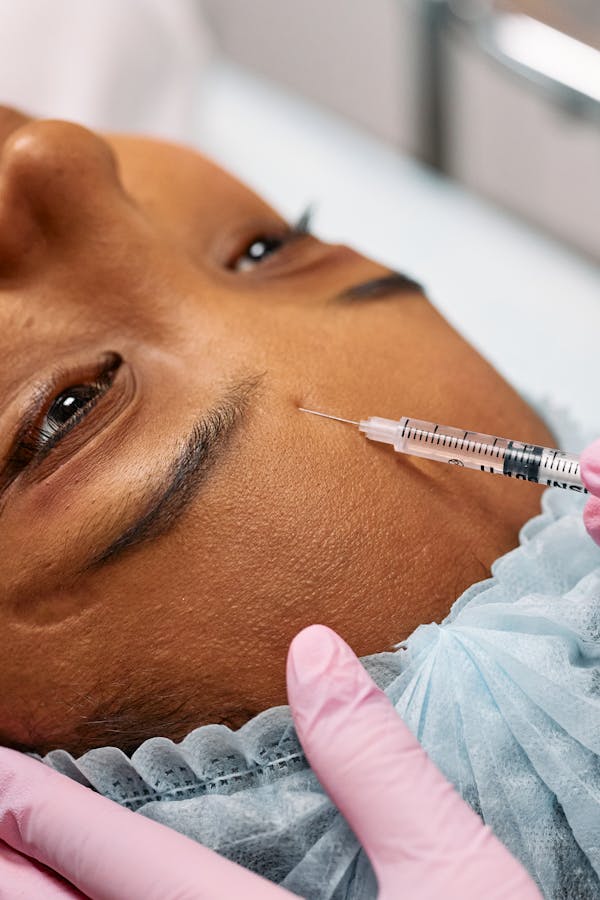Discover how three essential oils offer a natural alternative to Botox by promoting skin rejuvenation without invasive procedures or synthetic chemicals. Understanding their properties can empower you to enhance your complexion safely, avoiding common Botox risks and costs. This approach combines time-tested botanical benefits with modern skincare demands to unlock radiant, youthful skin naturally and effectively.
Key Insights Into Botox
Botulinum toxin, widely referred to as Botox, is a powerful neurotoxin derived from Clostridium botulinum bacteria. Its mechanism hinges on blocking acetylcholine release at nerve junctions, leading to temporary muscle relaxation. Notably, Botox is clinically validated for both medical and cosmetic purposes—from smoothing forehead lines, frown lines, and crow’s feet to treating chronic migraine, overactive bladder, and excessive sweating. Continue reading the article for more details.
In the same genre : The nicotine pouches trends shaping 2025: what to expect
While its transformative results are favored for achieving a subtle, natural look, regulatory agencies such as the FDA and MHRA underscore safety by mandating professional administration, given risks like unintended muscle paralysis, headache, eyelid drooping, or more rarely, serious allergic reactions. Adherence to approved brands and established protocols significantly reduces complications.
Interest in DIY alternatives continues to grow, particularly those harnessing natural ingredients. For instance, blends of jojoba oil, castor oil, and frankincense essential oil, as described by BeHealfit, aim to hydrate, firm, and rejuvenate skin without needles. Their mode of action typically focuses on boosting collagen, supporting skin texture, and gently reducing fine lines—yet such methods cannot match the muscle-paralyzing effect of injectable Botox.
In parallel : Proven Tactics for Easing PTSD in Military Veterans: Successful Strategies That Make a Difference
Choosing between professional Botox and natural at-home solutions should balance desired efficacy, comfort with procedures, and safety considerations. In all cases, consulting a knowledgeable provider or researching reputable resources helps manage expectations and minimize risks.
Botox Fundamentals: Medical Background, Approved Uses, and Mechanism of Action
Origin and science of botulinum toxin: history, potency, and classification
Understanding the botox overview begins with its roots: botulinum toxin is produced by the Clostridium botulinum bacterium, noted for extreme potency. For perspective, even minute amounts can impact nerve signaling, highlighting the necessity for stringent FDA approval and regulation regarding medical and cosmetic applications. Historically, botulinum toxin’s journey covers clinical use for both muscle disorders and appearance—two areas where botox vs botulinum toxin becomes relevant, as only certain formulations and types are suitable for human use.
Medical and cosmetic indications across facial and therapeutic treatments
The botox injection procedure is widely used for diverse conditions: medical indications range from chronic migraine and muscle spasticity to overactive bladder and hyperhidrosis. On the cosmetic front, botox targets forehead lines, crow’s feet, and frown lines. Both men and women benefit, with botox for men having seen a significant rise as societal trends shift towards broader acceptance of aesthetic enhancement.
How Botox interrupts nerve-muscle signals and its lasting effects compared to alternatives
Core to how botox works is its ability to temporarily interrupt nerve-to-muscle communication. By blocking acetylcholine release, botox relaxes targeted muscles, softening wrinkles or relieving spasticity. Preventative botox strategies allow some individuals to delay the onset of deep-set lines, a distinct outcome compared to dermal fillers vs botox, which restore volume rather than inhibit contraction. Duration varies, but most patients observe results lasting three to six months, after which repeat sessions are considered for ongoing effect.
Safety, Risks, Costs, and Natural Alternatives in Skin Rejuvenation
Side effects, misconceptions, and rare complications: what users need to know
A robust botox safety profile demonstrates that botox treatment, when performed by qualified providers, is generally safe and effective. Still, common side effects such as mild pain, bruising, facial weakness, or flu-like symptoms can occur, and managing side effects typically involves supportive care and temporary adjustments. The “Botox frozen face myth” persists, but most users who follow prescribed botox treatment receive natural results rather than stiffness or loss of expression. Rare complications, such as toxin spread resulting in difficulty swallowing or breathing, emphasize the importance of expert administration and awareness of individual health factors. Long-term data suggest that for most, botox is safe with periodic treatments, though muscle atrophy and strength recovery can follow extended high-doses.
Cost breakdowns, insurance coverage for medical cases, and choosing safe, qualified providers
Botox pricing varies, often ranging from $200–$1,200 per area; multiple factors like provider experience, clinic reputation, and treatment complexity affect cost. For medical cases, insurance sometimes covers botox treatment, particularly for conditions such as migraines or spasticity. Always confirm with healthcare professionals to ensure the botox safety profile and optimal results.
DIY “Botox” using essential oils
DIY botox, such as the popular recipe using jojoba oil, castor oil, and frankincense essential oil, aims to hydrate and firm skin. Jojoba balances sebum, castor stimulates collagen, and frankincense supports skin structure. However, these alternatives lack the potency and proven wrinkle-smoothing effects seen in professional botox treatment, though they offer a gentle, accessible supplement to a skincare routine.




